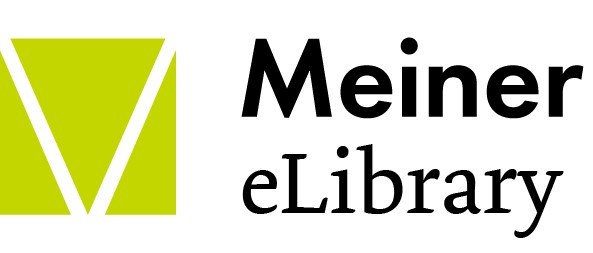ABSTRACTS
Domimic E. Delarue: Riegl liest Löwy – Riegl gelesen mit Löwy Der Entwurf einer positivistischen Kunstgeschichtsschreibung in Riegls Aufsatz Naturwerk und Kunstwerk und Löwys Die Naturwiedergabe in der älteren griechischen Kunst
Im gleichen Jahr wie sein Hauptwerk Die spätrömische Kunstindustrie veröffentlicht Alois Riegl in der Allgemeinen Zeitung (München) den Aufsatz Naturwerk und Kunstwerk, in dem er die Geschichte der Kunstgeschichte vom Idealismus des Klassizismus bis zum eigenen positivistischen Entwurf kritisch darstellt. Neben dem Materialismus Gottfried Sempers und der Kunstschaffenstheorie Adolf von Hildebrands diskutiert Riegl insbesondere die Erinnerungsbildtheorie des Archäologen Emanuel Löwy. Der vorliegende Beitrag rekonstruiert die Argumentation von Riegls Aufsatz und arbeitet das Verhältnis zwischen seiner positivistischen Kunstgeschichte und Löwys psychologischem Erklärungsmodell der Kunstentwicklung in Die Naturwiedergabe in der älteren griechischen Kunst detailliert heraus.
In the same year as his magnum opus Late Roman Art Industry Alois Riegl published the article Naturwerk and Kunstwerk in which he critically describes the history of art history from the classicist idealism to his own positivist approach. Besides the materialism of Gottfried Semper and Adolf von Hildebrand’s theory of art production Riegl discusses the theory of pictorial memory introduced by the archaeologist Emanuel Löwy. This paper reconstructs the argument of Riegl’s article and offers a detailed analysis of the relationship between his positivist art history and the psychological explanation of artistic development outlined by Löwy in Die Naturwiedergabe in der älteren griechischen Kunst.
Niklas Hebing: Kunst und Ökonomie bei Hegel Politisch-ästhetische Herausforderungen der bürgerlichen Gesellschaft
In der Forschung zu Hegels Ästhetik wird für gewöhnlich die absolut-geistige Seite des Kunstwerks als Selbsterkenntnis stiftende Objektivation von Bewusstseinsprozessen unterstrichen. Vernachlässigt wird, dass Hegel u.a. in seiner Rechtsphilosophie die sinnlich-gegenständliche Seite als Resultat der Arbeit bestimmt, durch die der Künstler Material aneignet und zur Selbstverwirklichung gestaltet. Als vertraglich anerkannte Sache persönlichen Eigentums kann das Kunstwerk in der Sphäre der modernen bürgerlichen Gesellschaft zur verkäuflichen Ware werden, wobei irrelevant ist, dass es an sich ideelles Eigentum kollektiver Selbstverständigung ist. Als Mittel singulärer Konsumtion strukturell nicht von anderen Sachen zu unterscheiden, überträgt sich das ökonomische Formprinzip auf das Kunstwerk, das nun »Fabrikware« (Hegel) ist. Vor dem Hintergrund der Positionen der Kritischen Theorie sowie der Kunstmarkt-Debatte der letzten Jahre diskutiert der Aufsatz schließlich die von Hegel vorgeschlagenen Auswege aus dieser Problematik auf zwei Ebenen: auf der pragmatischen die staatliche Kultur- als Ausgleichspolitik sowie auf der kunsttheoretischen die Möglichkeiten einer Wahrung ästhetischer Autonomie.
In current debates on Hegel’s aesthetics the absolute spiritual side of the artwork is usually emphasised. The artwork is conceived as a medium by which consciousness gains self-knowledge through objectivation. As a consequence, it is often neglected that Hegel, e.g. in his Philosophy of Right, determines the sensual and material side of the artwork as a result of a work process in which the artist acquires material and forms it in an act of self-actualisation. In the sphere of modern civic society, the artwork can become at the same time an object of personal property and a vendible good which is recognised by contractual law. With regard to the artwork as a vendible good it is irrelevant that the artwork is essentially meant to be a collective medium of self-consciousness. As a means of consumption it is structurally indiscernible from other objects within the economic circuit. The economic character assigns itself to the artwork and turns it into »Fabrikware« (Hegel) ? a manufactured good. Against the background of some positions in Critical Theory and the Art Market Debate of recent years, the article discusses solutions for this complex of problems which Hegel proposes on two levels: On the pragmatic level, the state’s cultural politics as compensation politics ? and on the theoretical level, the possibilities of ensuring aesthetic autonomy.
Daniel Hornuff: Kann Kunst forschen?
Fragen nach den epistemologischen Möglichkeiten künstlerischer Vorhaben gehören zu den aktuell vieldiskutierten der Szene. Dabei fällt auf, dass die Debatte zunehmend in eine Zweilagerbildung verfällt: Die emphatische Begrüßung künstlerischer Forschungen erzeugt heftigen Widerspruch – und vice versa! Daran anknüpfend erprobt der Beitrag eine ideengeschichtliche Perspektive: Welche Auffassungen von Kunst und Wissenschaft aktivieren Diskussionen über Artistic Research? Soll Forschung mythisiert, Kunst hingegen logozentriert werden?
Questions about the epistemological potential of artistic projects belong to the currently much discussed issues of the scene. It is striking that the debate increasingly falls into two camps: the emphatic welcoming of artistic research generates fierce opposition – and vice versa! Starting from this observation, the paper examines the issue from the perspective of the history of ideas: What conceptions of art and science enable discussions about artistic research? Should research be mythologized, art, however, be centered in the logos?
Tim Zumhof: Das Dispositiv der Kunst Zur institutionellen Struktur der Kunst im Anschluss an Michel Foucault
Im Aufsatz wird die These entfaltet, dass sich Kunst mit Foucaults Dispositivbegriff als ein Konglomerat von Institutionen, Praktiken und Subjektivierungsformen beschreiben lässt, das die konstitutiven Bedingungen hervorbringt, nach denen Dinge und Tätigkeiten erst als Kunst in Erscheinung treten und Individuen sich erst entsprechend als Künstler, Kunstvermittler oder Kunstbetrachter verstehen können. Diese Vorstellung eines Dispositivs der Kunst lässt sich als eine poststrukturalistische Variante der institutionalen Theorie der Kunst identifizieren, welche aber eine größere Sensibilität für Machtfragen aufweist und Analysemethoden für Machtbeziehungen anbietet.
This essay develops the argument that according to Foucault’s conception of the dispositif art can be described as a conglomerate of institutions, practices and forms of subjectification that produces the conditions under which things and activities appear in the first place as art and individuals can see themselves as artists, art educators or art viewers. This notion of a dispositif of art can also be identified as a post-structuralist version of the institutional theory of art, but is more sensitive to issues of power and offers methods to analyse relations of power.















